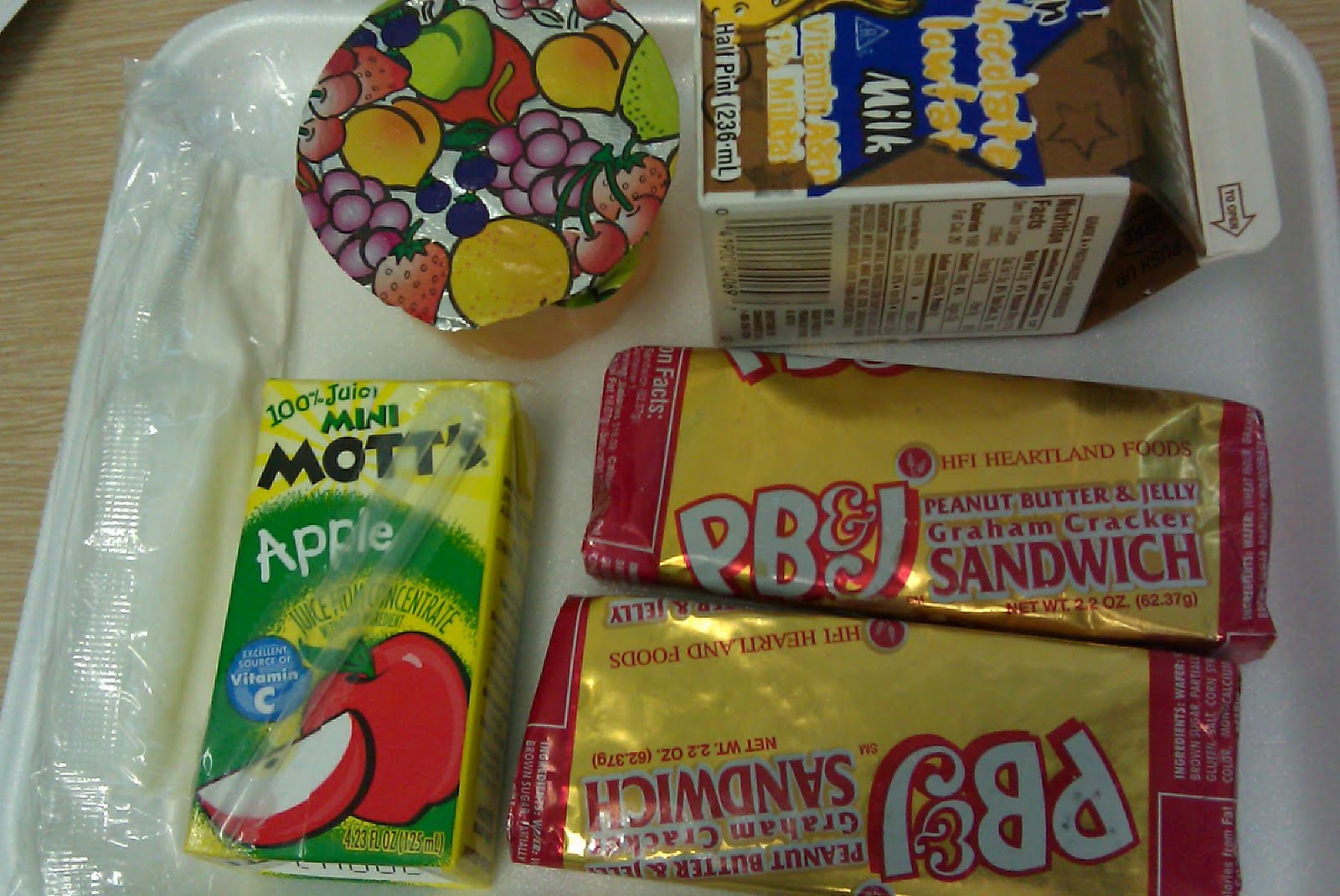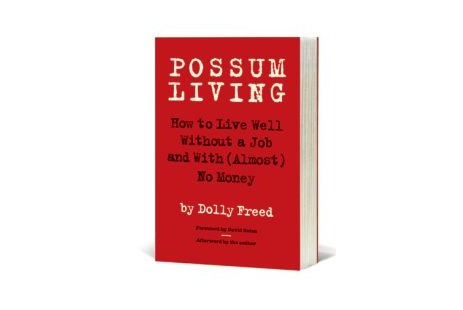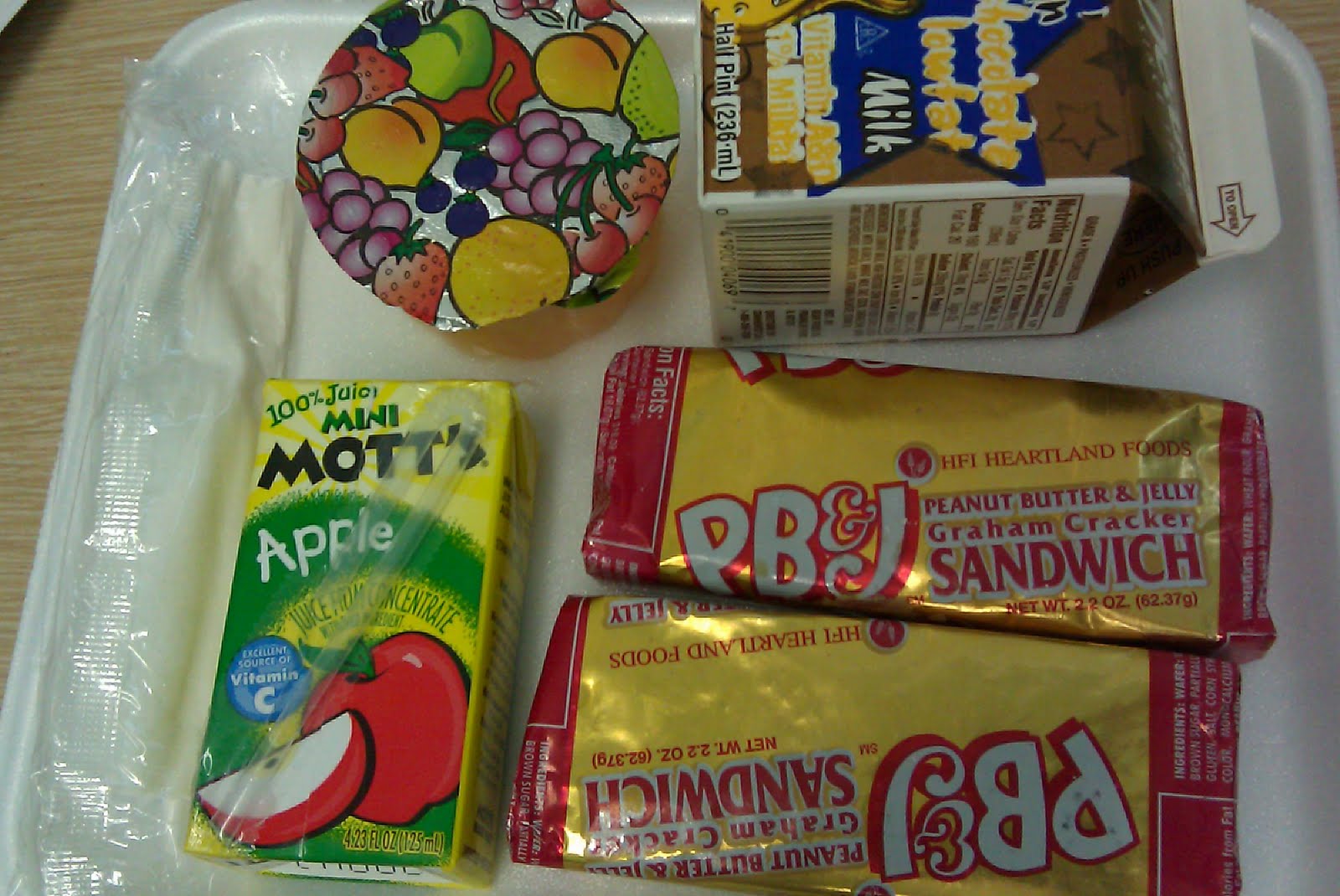 PB&J as metaphor: a subsidized lunch served in an Illinois school. Photo: Mrs. Q
PB&J as metaphor: a subsidized lunch served in an Illinois school. Photo: Mrs. Q
Regular readers will have noticed a certain emphasis on school lunch in the Grist food section lately. Veteran journalist Ed Bruske has been doing superb on-the-ground reporting on the topic; I’ve been obsessing about the anonymous teacher blogger Mrs. Q, and writing disappointed critiques of the school-lunch legislation now in the Senate.
A couple of days ago, Lisa Hymas’ great post on green-inclined people who choose to be childless — Lisa has dubbed them GINKs — got me to thinking. Are a lot of people tuning out our coverage — and the school-lunch issue generally — based on the fact that they don’t have kids? (For the record, I don’t either.) For that matter, are people who are fortunate enough to have their kids in private school, or to send them with a decent lunch everyday, employing the same not-my-problem logic?
If so, I fully understand. The world is full of trouble; one has to choose one’s battles — and causes — carefully, to avoid being overwhelmed. But I want to make the case that everyone concerned about the future of the food system — with its vast influence over public health and climate stability — should care deeply about school lunches.
School lunches are our society’s most concrete, tangible way of transmitting foodways to rising generations. Sure, we pass on foodways in home kitchens and in our built infrastructure of restaurants/eateries, and well as through advertising; but those are in the private sphere. The public-school cafeteria is where we create a public vision of what the food system should be like. In short, it’s the public contribution to the formation of kids’ eating habits. And the eating habits we develop as kids largely determine the food choices we make as adults. If that weren’t true, the food industry wouldn’t be dropping $1.6 billion every year marketing to kids.
Foodways are an expression of habit. True, habits evolve and can be transformed. Most people who now populate the sustainable-food movement — including me — grew up eating bad school food, McDonald’s, TV dinners, etc. But habits also have tremendous momentum. The vast majority of people in my generation — I’m 44 — remain hooked on highly processed junk. In other words, they follow the societal norm with regard to food. And the school cafeteria helps establish that norm.
There are about 75 million children enrolled in public schools. About 31 million of them rely on free or reduced-price lunches. Almost all of them have easy access to so-called “competitive foods” — the often-brand-name junk food offered as “lunch” alongside cafeteria fare.
Ed Bruske’s report on Mendy Heaps, the Colorado school teacher who was censured for trying to make fresh fruit accessible in her school, illustrates the “competitive food” problem. Here’s what’s offered to kids in this typical public school:
Pizza, corn dogs, Subway sandwiches, Chick-fil-A, Cheetos, nachos, fruit rollups, ice cream sandwiches and … “healthy” fries. “They call them ‘healthy’ because they’re baked!”
And this is what the kids with money have access to! For the 31 million kids who rely on free or reduced-price offerings through the National School Lunch Program, that junk is an indulgence for when they have some change jingling in their pockets. What they get in the cafeteria line is no better — or even worse. For a firsthand, on-the-ground account of what those kids get, there’s no better source than Mrs. Q’s blog. In solidarity with her school’s students, most of whom rely on the free-lunch program, Mrs. Q has been eating in the cafeteria. Here’s what she got last month:
17 school lunches eaten:
4 – pizza lunches
3 – burger-like lunches
3 – chicken lunches
2 – chili lunches
1 – hot dog lunch
1 – pasta lunch
1 – cheese croissant
1 – cheese lasagna
1 – mac and cheese
Now, none of that has to be dreadful. With some nice ingredients, some cooking skills, and fruits and veggies on the side, any of those could be the center of a decent kids’ lunch. But when your read Mrs. Q’s posts and check out her pictures, you see that her school’s cafeteria is serving up dismal heat-and-serve versions of these dishes. And we also know that, under severe budget pressure, schools have to seek the cheapest ingredients possible –too often, quality notwithstanding.
As an organizing metaphor for what school lunch has come to, I can think of no better example than when Mrs. Q found herself being served a peanut-butter-and-jelly sandwich. While the merits of such a dish as lunch fare are debatable — I ate more than my share of PB&Js as a kid — you’d think preparing them would be within the competency of any cafeteria crew: slather peanut butter on one slice of bread, jelly on the other. Combine. Instead, Mrs. Q got something vile and unholy, pre-packaged and branded. It literally made her sick.
With such garbage being served in the lunch line, it’s no wonder kids grope for Chick-fil-A and Cheetos when they get the chance.
What we’re doing in public-school cafeterias is helping brutalize the palates of today’s children. We’re helping mint literally millions of customers for a food industry that generates tremendous profit selling cheap, abysmal, and, indeed, ecologically ruinous food. We are helping to shape the food system that we’ll have in 10 years and beyond: a food system that builds health within communities and ecosystems–or one that does the opposite.
Transforming the cafeteria alone will not transform the food system. The food industry has built up tremendous cultural and economic momentum over decades; having seized control of school lunches is only one facet of its domination over our food culture. But the school cafeteria is the public aspect of that domination — the one ostensibly controlled by citizens through our elected representatives. We all have a stake in it — whether we have children or not, whether we are privileged enough to shelter our kids from the nightmare of the cafeteria or not. And by transforming the cafeteria, we put public weight behind the ongoing grassroots effort to create an ecologically sustainable, socially just, and ecologically sound food system.
As I’ve argued so many times before, the National School Lunch program is pathetically underfunded — it could literally be doubled for the equivalent of one month’s spending in Iraq and Afghanistan. For cafeteria operators, our paltry outlay for school food makes buying quality ingredients and cooking them virtually impossible — creating a vacuum to be filled by corporations that know how to turn a profit while churning out cheap food. Pending legislation doesn’t commit nearly enough extra money to remedy that situation — and, insult to injury, it finances its ultra-modest funding boost by cutting important (and cash-strapped) conservation programs.
For information on how to make your voice heard on school-lunch legislation, go here and here. And stay tuned on Grist for more reports from the front lines of the cafeteria debates.



